History
Tamerton Foliot – a brief history
Want to know about your village? Here are a few things that may interest you. These snippets of history are simply a brief and informal account of life. It is intended that this page will change from time to time to bring you a range of informative facts on how Tamerton Foliot has changed and developed over time.
If you have anything to share with your fellow residents please send it in for inclusion via the e-mail on the Contact page. Please note that the Society can only accept material of which you have legal ownership or permission from the originator. TFVCS will not accept responsibility for unauthorised submissions.
School
Mary Dean’s CofE Primary School was founded in 1720 for twenty poor boys of the parish. The original building on which there is a commemorative plaque is now a private house at the junction of Fore Street and Horsham Lane. This was in use up until 1877 when it moved to a larger purpose built school at the top of Rock Hill. The current school building built in 1975 is in Mary Dean Avenue.
Much more here: The Story of Mary Dean’s School – established 1722
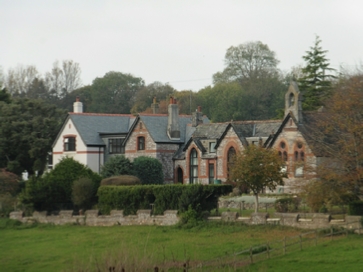





Seven Stars Garage
The following story was told by Mr Arthur Bryant to his family. It dates from late 1920s, early 30s:
“ Next to the Seven Stars was a smithy owned by Mr Facey. On quarter days, farmers would come in on horseback to pay their rents to the squire’s agent in a room above the Seven Stars bars to which latter they would then adjourn for refreshment. The horses were handed over to village boys who would hold them while being shod, if needs be, and then would water them at the Seven Stars well. The boy’s reward was a penny and a pasty. Fortunately the horses were able to take the farmers home without the need to be guided by the riders.”
The smithy was turned into a car repair business and the building was demolished in the late 1950s early 60s to make space for the pub car park. The business transferred to a ramshackle building at the head of the land where Riverside Walk now is and adopted the name Seven Stars Garage. Mr Facey sold the business to Mike Tozer (who was already working for him) and it was then moved to its present location when Cllr George Creber arranged for council allotments to be used for the garage in order to develop Riverside.
May Carnival
The Tamerton Foliot Carnival has taken place since the early 1900’s and grew out of the fairs and markets dating back to the 13th century. Held annually on the first Saturday in May at Wadlands Meadow. Up until the 1980’s our carnival was sited in various venues around the village including Mary Deans’ School grounds. On the day there is a procession through the village accompanied by the Lord/Lady Mayor of Plymouth.
On the Saturday closest to St. Valentines Day the choosing of the May Queen and attendants takes place
A Strawberry Fayre is held usually in June. This dates from 1922 when it was established by the Methodist Chapel.
St. Mary’s Church
It is thought that a church was founded here as early as the 7th century by two saints, Indract and Dominic. The present building dates back to the later years of the 1200’s.
The Copleston Oak is a hollow tree standing outside the church gates named after one of the Lords of the Manor. John Copleston (1546 – 1608) of Warleigh, in 1561, killed Christopher Monnes (said to be his godson) by throwing a dagger into his back by the Copleston Oak tree on Tamerton village green. Woodland Trust page
St. Mary’s Church, Tamerton Foliot. A History and Guide by P.S. Bebbington
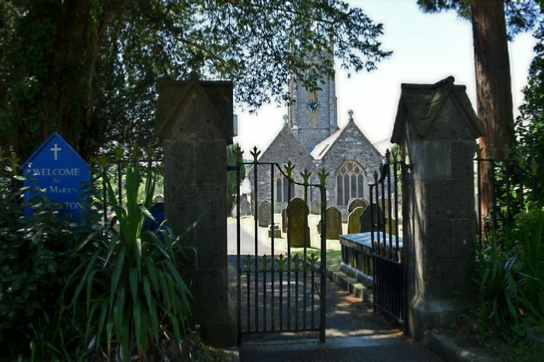

Tamerton Foliot Railway Station
Building began in 1888, it had sidings and goods sheds. Accounts for the building work show the total cost to be estimated at £6,475.
The Proposed Terms of Land Acquisition for the station construction contain a few fascinating facts namely;
1) the railway company to build a simple station with two platforms
2) the company paid £2,000 for the land, mineral rights and all claims for damages
3) a further £500 paid to the landowner for him to provide a road and fencing ‘from the station to Tamerton Foliot parish road.’ (now Station Road).
4) the railway company to topsoil the embankments but the landowner* is responsible for any planting of suitable trees or shrubs at his own cost. However the company will be responsible for maintenance and replanting when necessary.
* Radcliffe Family
The need for a station was in response to the growing demand for Tamar Valley market garden produce needing to be sent to supply the rapidly increasing population of Plymouth and beyond including London. The station closed in the mid 1960’s under the drastic appraisal headed by Dr. Beeching of the national rail system. It later became a field study centre for local education and is now a private house.
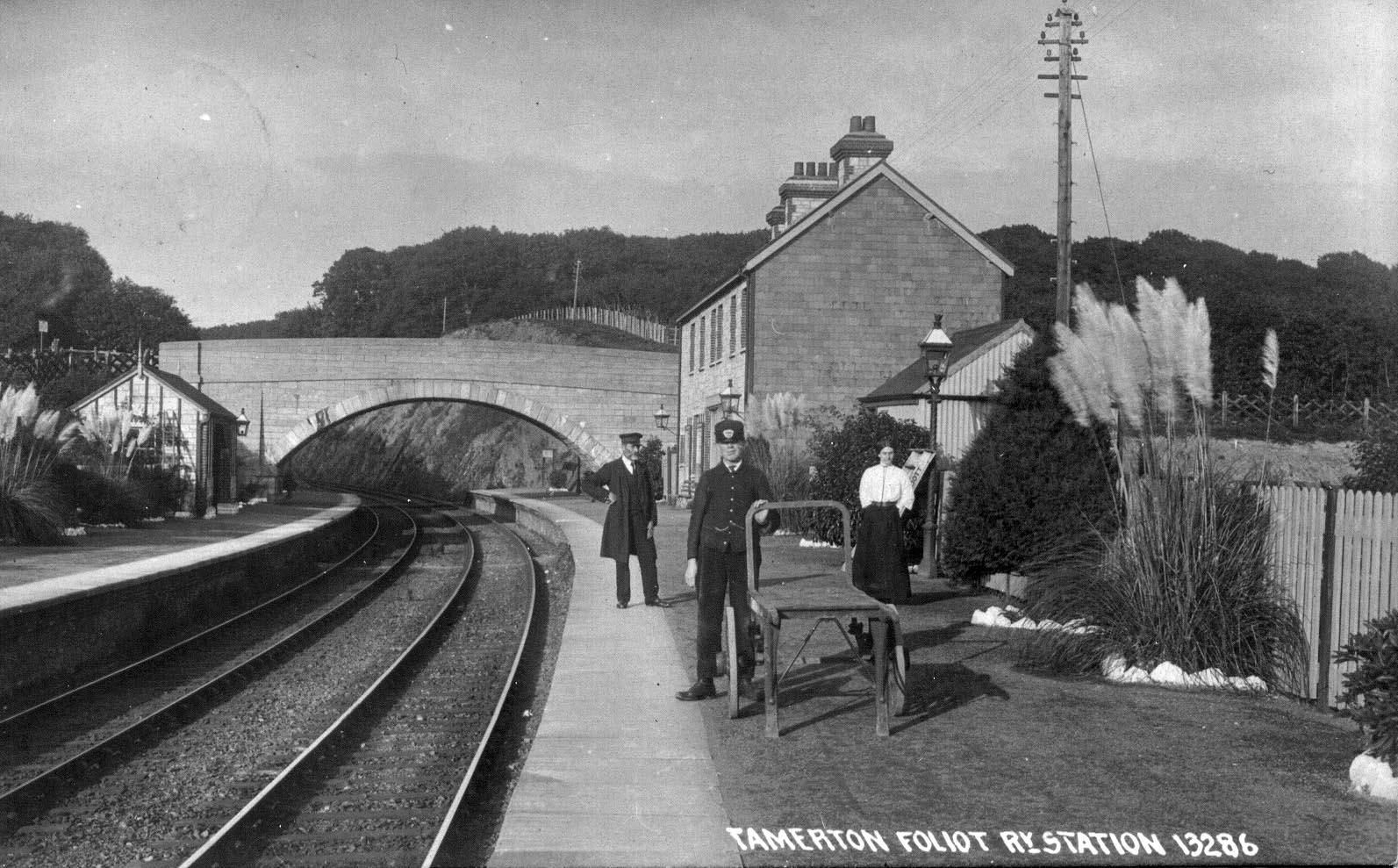
From the Domesday Book – Around 1086
Alured the Breton himself holds Tamerton Foliot. Land for 10 ploughs. In demesne are 3 ploughs and 7 slaves and 16 villeins and 6 bordars with 5 ploughs. There is a salt pan rendering 5s and 3 acres of meadow pasture and woodland ½ league long and 3 furlongs broad. Now it is worth 100s. Ingvar held it.
Notes:
-Alured is the old spelling of Alfred, he was Lord and also Tenant-in-Chief 1086.
-Ingvar was Lord in 1066.
-demesne – land for the exclusive use of the lord of the manor
A history from 1900 – anonymous
Tamerton Foliott, is a village and parish situated at the confluence of the Tamar and Tavy rivers, five miles N.W. from Plymouth, in the south East or Tavistock division of the county, Roborough hundred, and county court district of Stonehouse. The Church of St Mary was built in 1318, in the reign of Edward the Second. A memorial clock, with chimes striking the quarters and hours, has been placed in the tower in remembrance of Mark E. Grigg, Esq., is in the Perpendicular style with a handsome square, embattled tower, containing a peal of six bells. In the interior are monuments to members of the Copleston, Bamfhylde, and Radcliffe families ; a stained window was placed in 1887, in memory of General Macan. The north aisle has been rebuilt from plans by Mr. Fellowes Prynne. The living is a vicarage, in the gift of the Lord Chancellor. There is a parochial endowed school founded 1734 for boys and girls. About £50 is annually distributed among the poor from the Maristow Charity and the gifts of various benevolent individuals. Maristow, the seat of Right Hon Sir Massey Lopes Bart, is in this parish. The ancient manor-house, situated at Warleigh, on the banks of the Tavy, about a mile from the village is the property of Walter Radcliffe, Esq, the lord of the manor. The population in 1881, was 1,147, and in 1891, 1,118. The South Western Railway passes through Warleigh Wood where a station has been built.
POST, TELEGRAPH, SAYINGS BANK and Money Order Office.-Fredk Dingle, post-master.
CHURCH (St, Mary)—Rev. Edward Roberts MA. vicar
Chapel —Wesleyan
Convalescent Home —Chairman, B. Raynolds-Fox ; matron, Miss Phear,
ASSISTANT OVERSEER—Henry Huxham
PAROCHIAL School—Walter Brown,master; Mrs W. Brown, mistress
PARISH COUNCIL —clerk, Henry HuxhaM
RAILWAY STATION. —Warleigh Wood, Robert Casely, station master
A detailed description of major historical families
There is a lot of history to Tamerton Foliot surrounding the Foliots (John Foliot being a half-brother of William the Conqueror ). Most will have heard of the Coplestons – the murder and subsequent Royal Pardon from Queen Elizabeth I. Warleigh Manor dates back to the 1100s. All this is detailed here:
https://en.wikipedia.org/wiki/Tamerton_Foliot
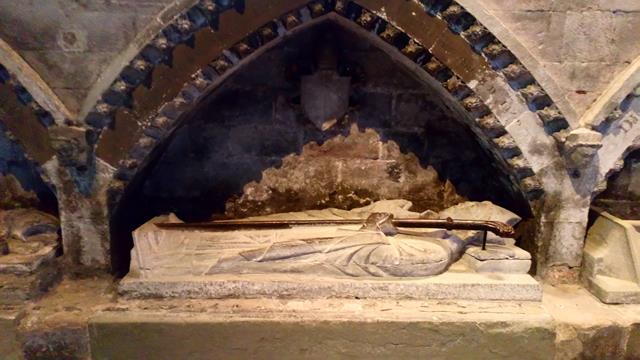
The wooden crozier is probably a 19th century replacement.
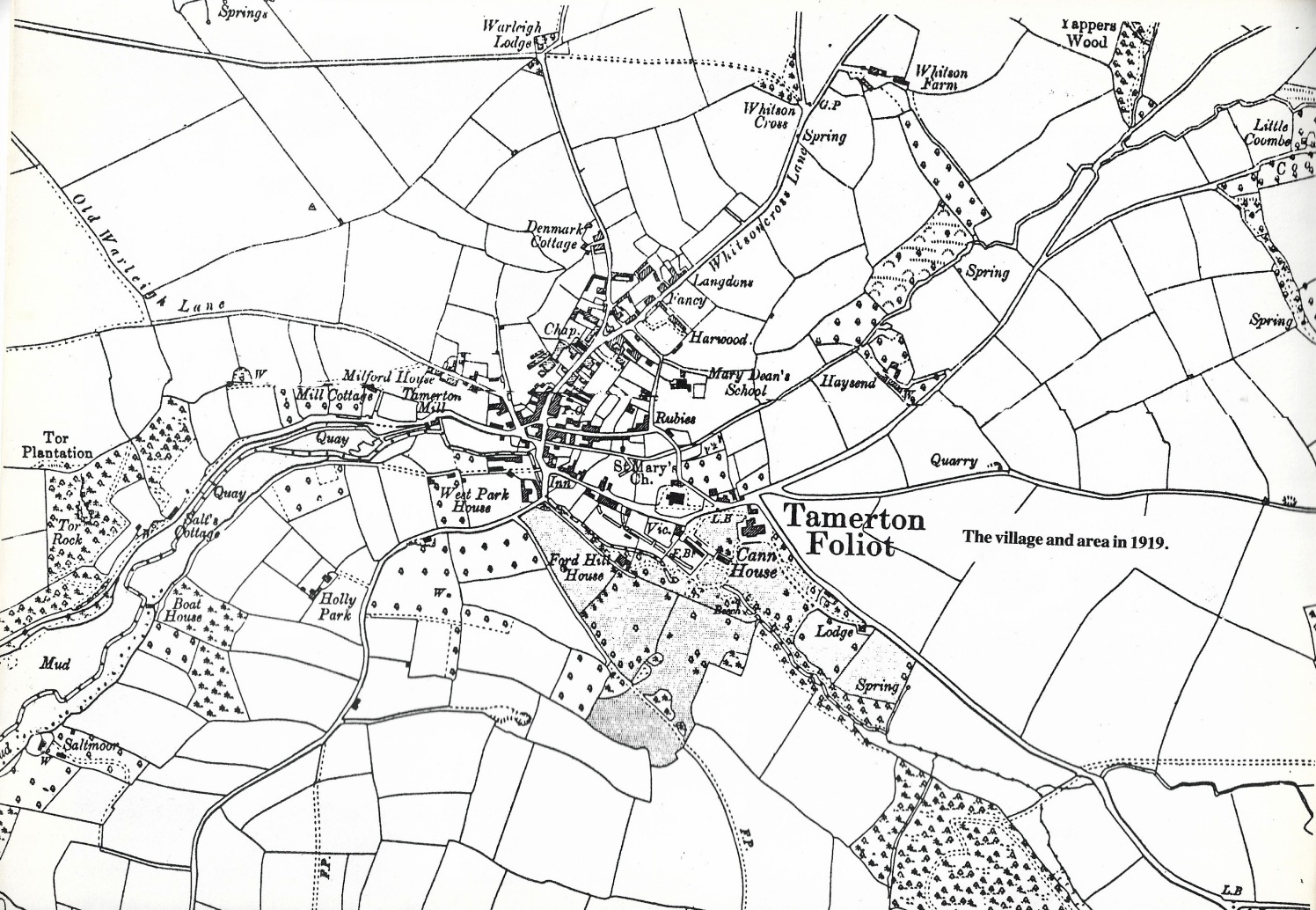
1919 Map
References
- St. Mary’s Church, Tamerton Foliot. A History and Guide by P.S. Bebbington Amazon
- West Devon Records Office
- Tamar Valley Area of Outstanding Natural Beauty www.tamarvalley.org.uk
- Devon History Society www.devonhistorysociety.org.uk/
- www.antiques.co.uk
- www.opendomesday.org